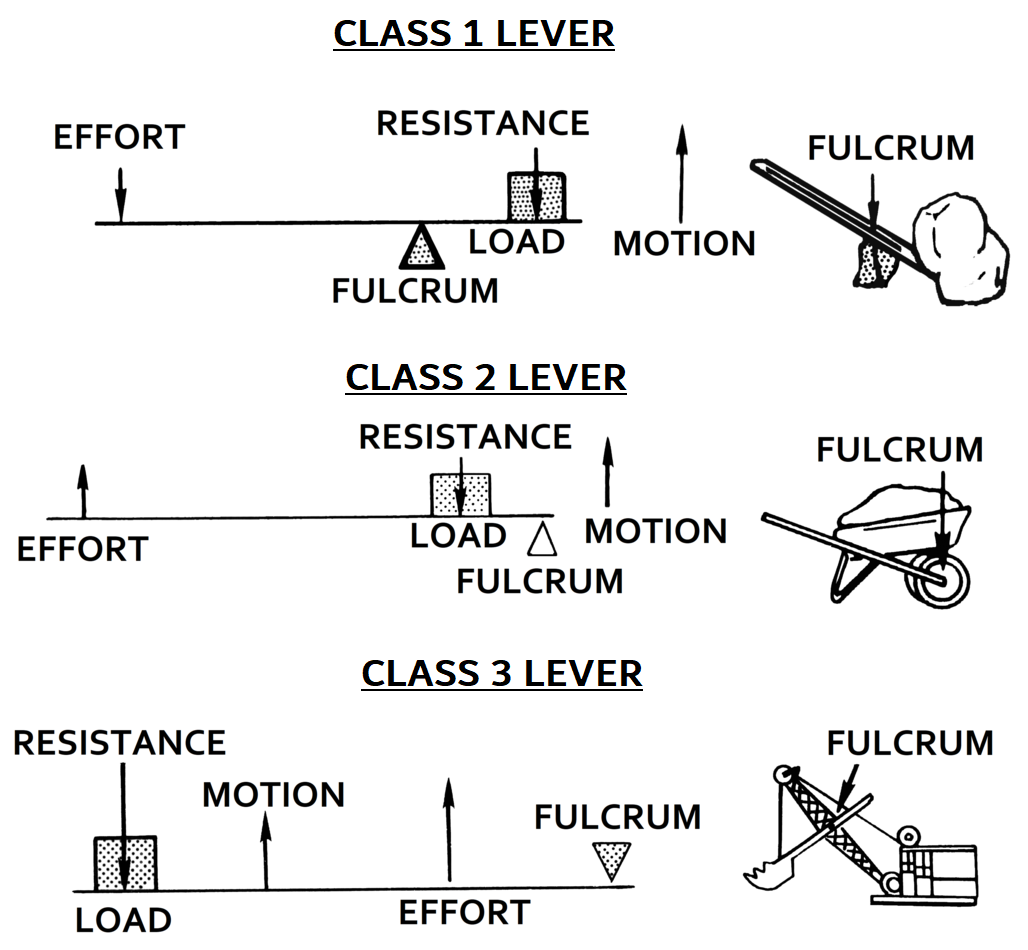A lever is a simple machine that uses a pivot point (also called fulcrum) to lift a load.
A lever has three aspects:
- load: This is the object to be lifted
- effort: This is where the force required to lift the object is located
- pivot point (or fulcrum): This does not move.
Levers can allow a smaller effort to lift a larger load i.e. mechanical advantage is produced.
MA & VR
Formula
Deriving the formula
When we calculate the mechanical advantage for an object, we assume that it is in equilibrium, i.e. the load and effort forces cancel each other out. Since the lever is in equilibrium, it doesn’t rotate i.e. it is also in rotational equilibrium. The only way for this to occur is if the net torque in the system is zero.

(Since the torques are in the opposite direction, being the same magnitude results in the net torque being zero)
(MA = Force out/ Force in)
Lever Classes
Based on the positioning of the fulcrum, load and effort, levers are divided into classes:

A useful mnemonic to remember the classes is FLE. Find the middle item in the lever, and depending on it’s position in FLE, determine it’s class. For example:
- Seesaw: Fulcrum is in the middle, which is first in FLE. Therefore seesaws are first class levers
- Nutcracker: Effort is in the middle, which is third in FLE. Therefore nutcrackers are third class levers.